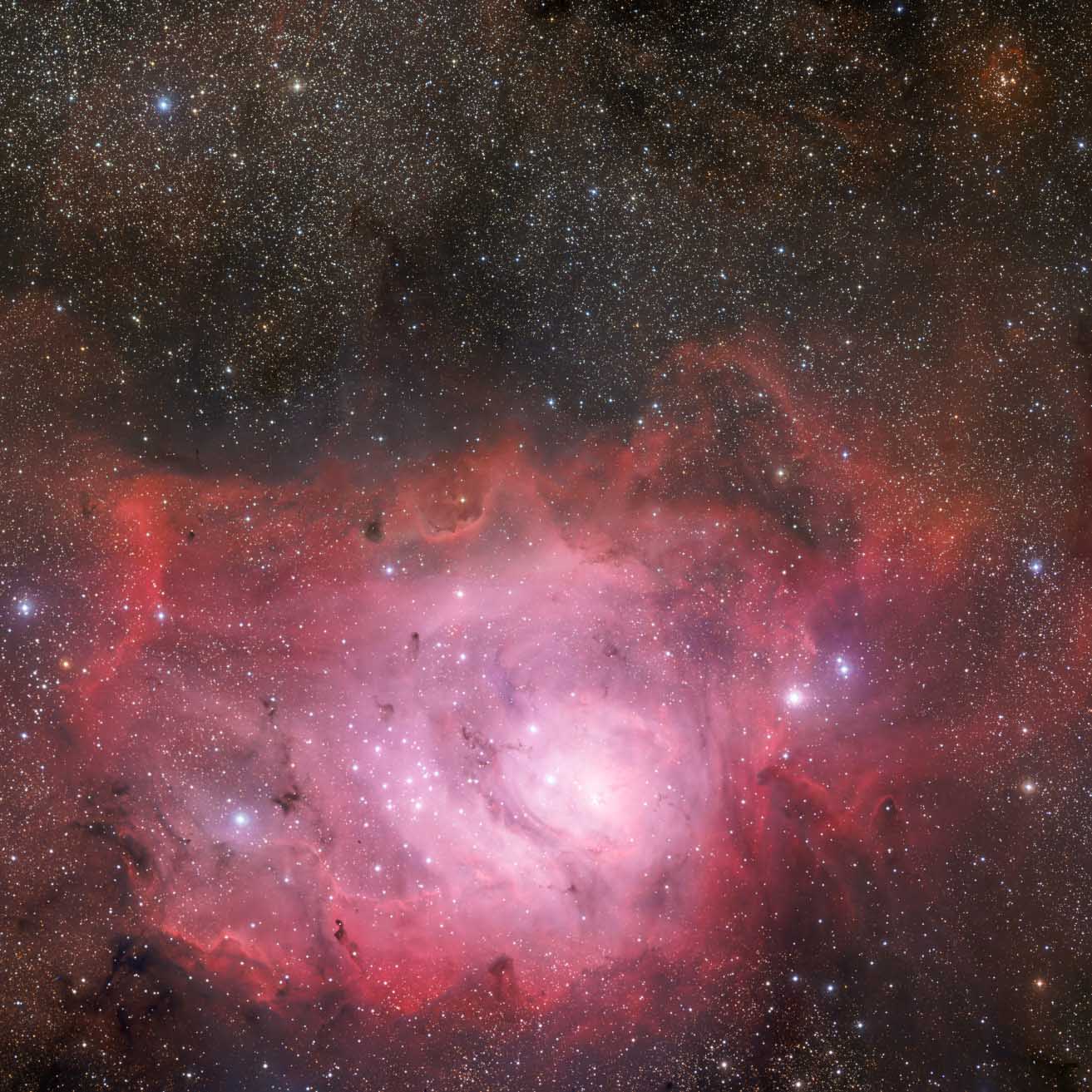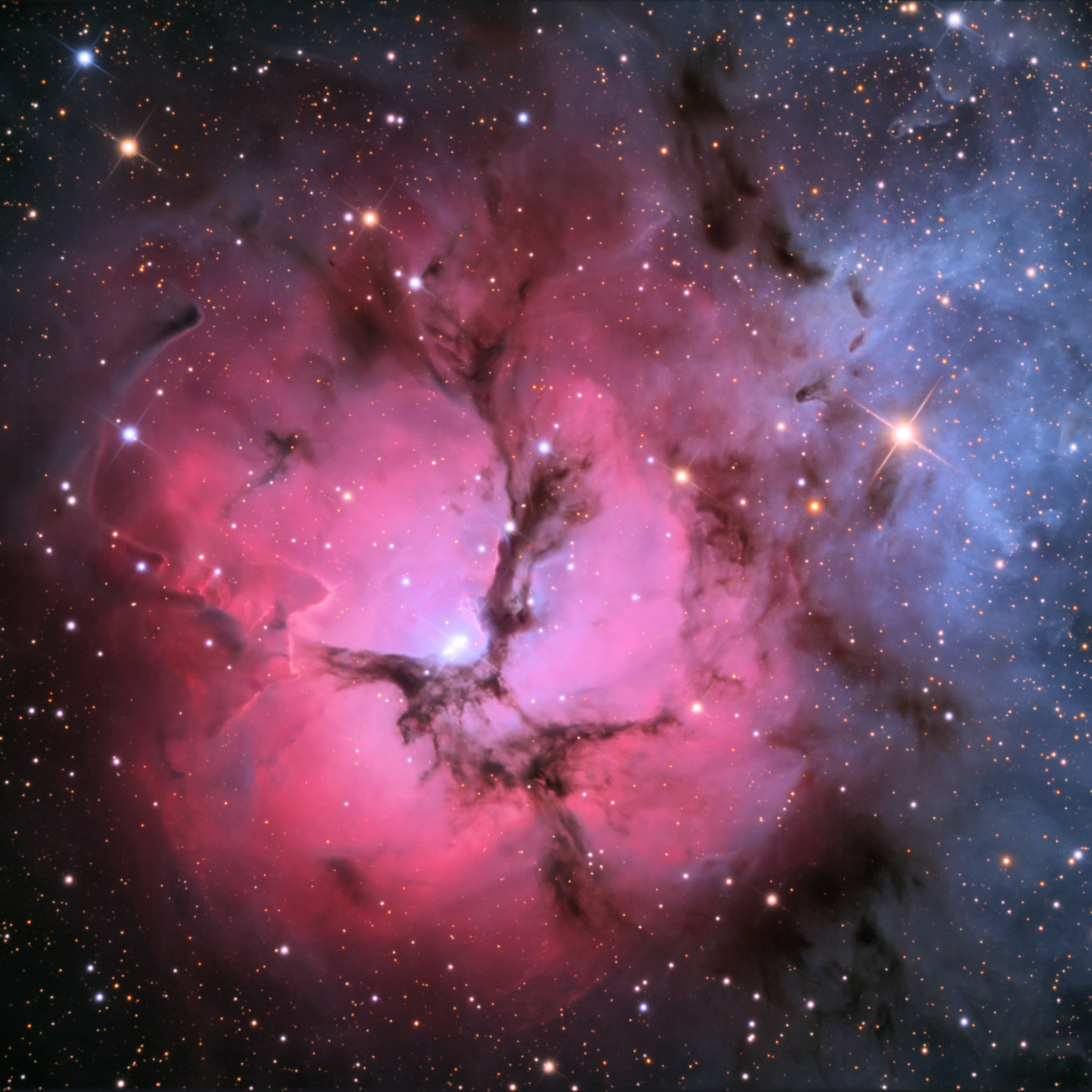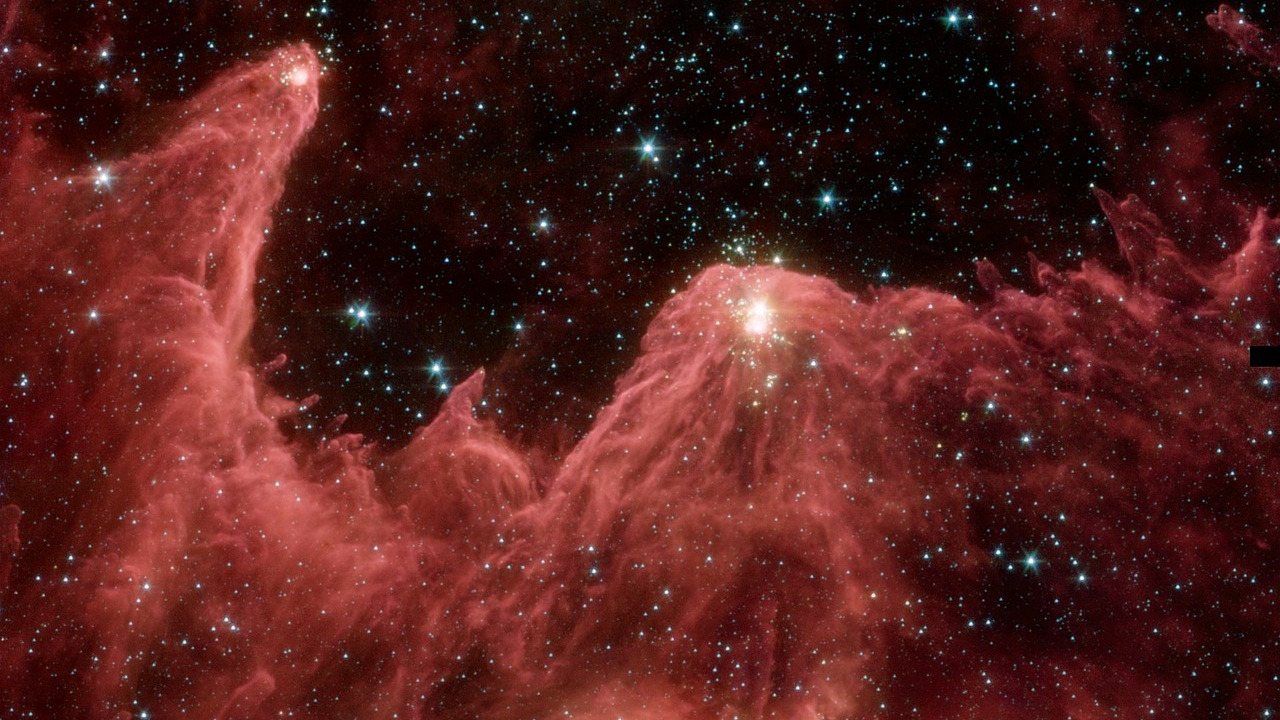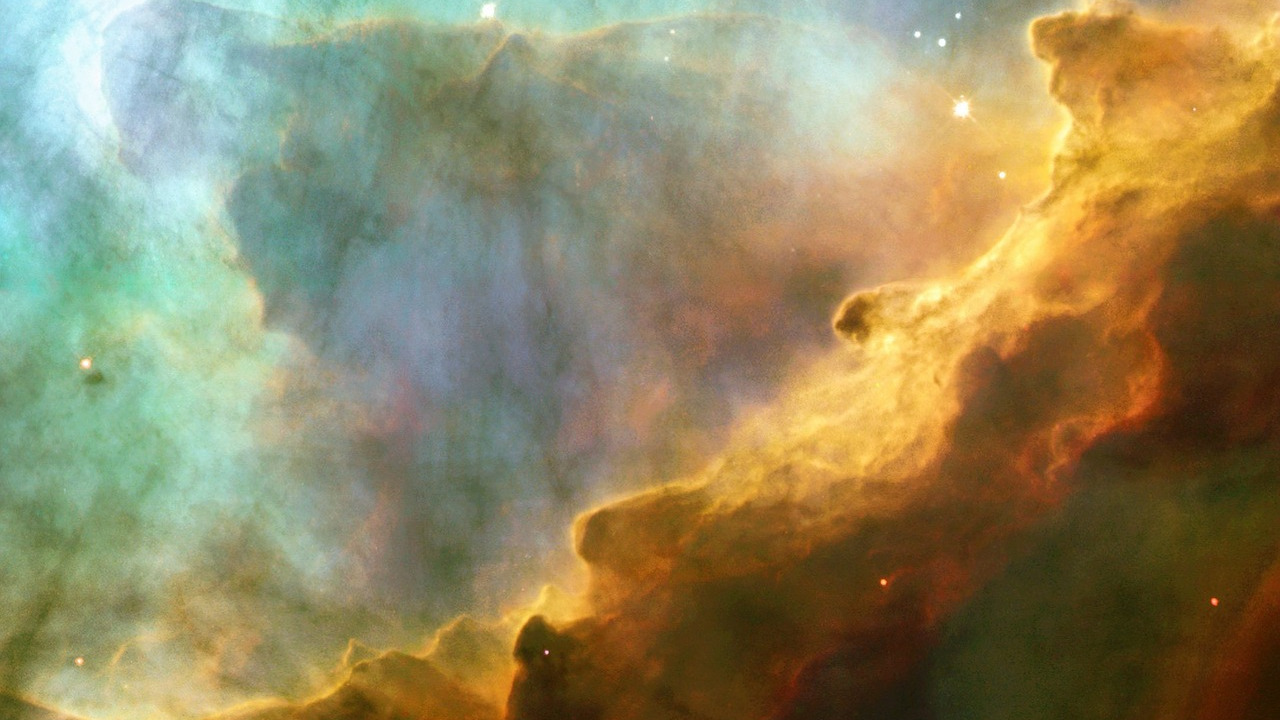A tour of the summer skies
From the Summer Triangle to the centre of the Milky Way: prepare yourself for a relaxing stroll across the summer sky!

Every season has its appeal, astronomically speaking. Our small spaceship, the planet Earth, shows us the most beautiful sights throughout the year, allowing us to enjoy the view into space from its panorama window.
The Summer Triangle and its objects
Lyra, Cygnus, and Aquila are striking constellations in the summer night sky. Together, the three form the famous Summer Triangle with their main stars Vega, Deneb, and Altair. The stars are among the brightest in the northern sky and can be seen high in the sky even at dusk. Vega, in particular, 25 light years away, is the first to prevail as the bright evening light fades.
We find the planetary nebula M57, also known as the Ring Nebula, in the constellation of Lyra. An oval ring of smoke reveals itself at high magnification - even in a smaller telescope. It is 1.3 light years across. A white dwarf star can be observed in the centre, but this is only accessible visually with a large telescope.
The 18,000-year-old supernova remnant of the Cirrus Nebula in the constellation Cygnus is ideal for nebula filter freaks. You can see impressive filament structures with a UHC filter. It is very large and has a rather low surface brightness.
Sagittarius
In July or August, as it gets dark, you will discover the constellation of Sagittarius to the south, close to the horizon. Because it's so low in the sky, be sure you have a clear view to the horizon when selecting an observation site. We are looking directly into the centre of our galaxy here, where the many bright clouds of the Milky Way dance. An almost circular shield-shaped cloud will stand out, which should be hard to miss. You find yourself now in a region full of stars below the constellation Aquila.
Fifteen degrees lower you will find Sagittarius: a constellation that is around thirty degrees wide. At first glance, only the brightest stars stand out, their arrangement may remind you of a kettle. That's why insiders call this section the Teapot. Well, did you recognise it in the picture too? You can make out the handle on the left, the spout on the right, and the lid on top. You will find some of the most beautiful deep sky objects in the immediate vicinity, and we’ll take a closer look at these now.
The Lagoon Nebula M8

We can see the Lagoon Nebula M8 on dark nights with the naked eye. It's a lovely object for binoculars, but it looks absolutely fantastic through a telescope.
You will have no difficulty finding the Lagoon Nebula, because it stands out immediately with its slightly reddish colour. If you cannot spot it straight away, you should orient yourself to the stars λ Sgr and μ Sgr, which form a triangle with the nebula. It is a large emission nebula 6,000 light-years away, which has an elongated form containing a dark nebula in the shape of a lagoon. This separates the bright part of the nebula from an open cluster, which is embedded in the nebula and originated there.
One problem with observation is its low altitude, because it is just 15 degrees above the horizon. This means that not only do you have to find an elevated observation location, but also wait for the best weather.
The Trifid Nebula

Adjacent to M8 we can see the Trifid Nebula M20, the Omega Nebula M17 and also the Eagle Nebula M16. They are all typical emission nebulae, which should be on every hobby astronomer’s observation object list. But let's first take a closer look at the Trifid Nebula.
If you already have the Lagoon Nebula in your telescope, then the Trifid Nebula is not far away. It is less than one and a half degrees north west, and should already be visible in your optical finderscope. At 5,200 light years away, it extends over an area of 20 arc minutes. We recommend a telescope to observe it, but under good conditions you could also use binoculars.
The name Trifid derives from its three-lobe structure, because a dark nebula lies like a black cross over a bright nebula section. However, this structure can only be seen with a large telescope, smaller instruments will only reveal only a bright nebula with some bright stars.
You can improve the contrast by observing using a UHC filter, which in this case works slightly better than a OIII filter.
Eagle Nebula IC 4703
The Eagle Nebula, which is 7,000 light years away, became famous 20 years ago. It was targeted by the Hubble telescope which showed us an image of three towering nebulae each four light-years tall, which became known as the Pillars of Creation because we are looking at regions of star formation.
Such background information is always interesting, because the knowledge gives us a new perspective to the objects we observe.
The Eagle Nebula is generally known as M16. But this is actually incorrect, because officially M16 is the star cluster embedded within the nebula. The Eagle Nebula itself is known as IC 4703.

How do you find the Eagle Nebula? To do this, you should orient yourself to the star γ Sct in the constellation of Scutum, a little above Sagittarius. The star has a brightness of magnitude 4.6 and is easy to see with the naked eye. You will find the nebula easily if you are using a Telrad or Radiant finder:
Move the telescope up slightly until you see the star between the first and second target circles. Then move in a westerly direction (or right) until γ Sct is a short distance (about 0.5°) to the left of the outermost target circle.
In order to see the nebula properly, you also need a dark sky and a telescope with an aperture of 150 mm or more. You will be able to distinguish more features if you use a UHC or OIII nebula filter, both filter types are equally effective for this object.
With a little luck, you will make out the wings of an eagle in the differences in brightness.
The Omega Nebula M17
The Orion Nebula M42 is, without a doubt, the most beautiful and well-known emission nebula. This object is the biggest highlight of the winter night sky. However, most of the beautiful emission nebulae can be observed in summer. The North America Nebula, the Cirrus Nebula, the Eagle Nebula, the Omega Nebula, and the Lagoon Nebula all bustle along a line from Cygnus to Sagittarius.
While light-polluted German skies mean that the first three are usually only visible with a filter, and the last one is so close to the horizon that it often disappears in the haze, the Omega Nebula is one object that can be found with any telescope. In Germany, on the meridian, it reaches an altitude of around 20 degrees. With a brightness of magnitude 6, it had already come to the attention of observation pioneer Charles Messier more than 200 years ago, and was given the number M17 in his catalogue.

How the nebula acquired its name
The telescopes of Messier’s era were not very powerful and could only show the most prominent regions of the nebula. An arch, in the form of a horseshoe, to which the object owes its name, appeared to stand out especially clearly. This has led to the Omega Nebula also occasionally being known as the Horseshoe Nebula or the Swan Nebula. Actually, the Swan Nebula fits it best of all.
Modern telescopes, together with a wide-angle eyepiece and a nebula filter, offer a view of this object that would have been unimaginable just 200 years ago.
What do you see with different telescope apertures?
The Omega Nebula seen in historic times is only a small segment of the entire object and describes only the curved neck of a swan. If the seeing is good, you can clearly see a swimming swan with a 4-inch aperture. From 8 inches onwards, the first outer areas are also visible. Using a UHC filter, the swan appears to float in a faint nebular lake. The fine structures of the swan’s body can be identified with 12 inches. Dark trails that run semi-diagonally through the body are particularly striking. If you look closely, you can also see that the swan wears a crown on its head.
Finding the Omega Nebula
Physically, M17 is a young star-forming region. Inside, there is an open cluster that is only a few million years old, which ionizes hydrogen gas and stimulates it to glow. However, the cluster itself is not observable because it is obscured by the nebula. According to the most recent measurements, the Omega Nebula is said to be around 6,000 light years away and has a diameter of around 70 light years.
M17 is so bright that it can be immediately recognised in a finderscope - although it is not easy to find. Its surroundings are rich in stars, but there are no striking patterns. South of the constellation of Aquila there is a chain of several magnitude 4 stars that belong to the constellation of Scutum. The southernmost star is magnitude 4.7. From there it is only another 3 degrees to the Small Sagittarius Cloud M24. M17 can be found halfway between the two.
